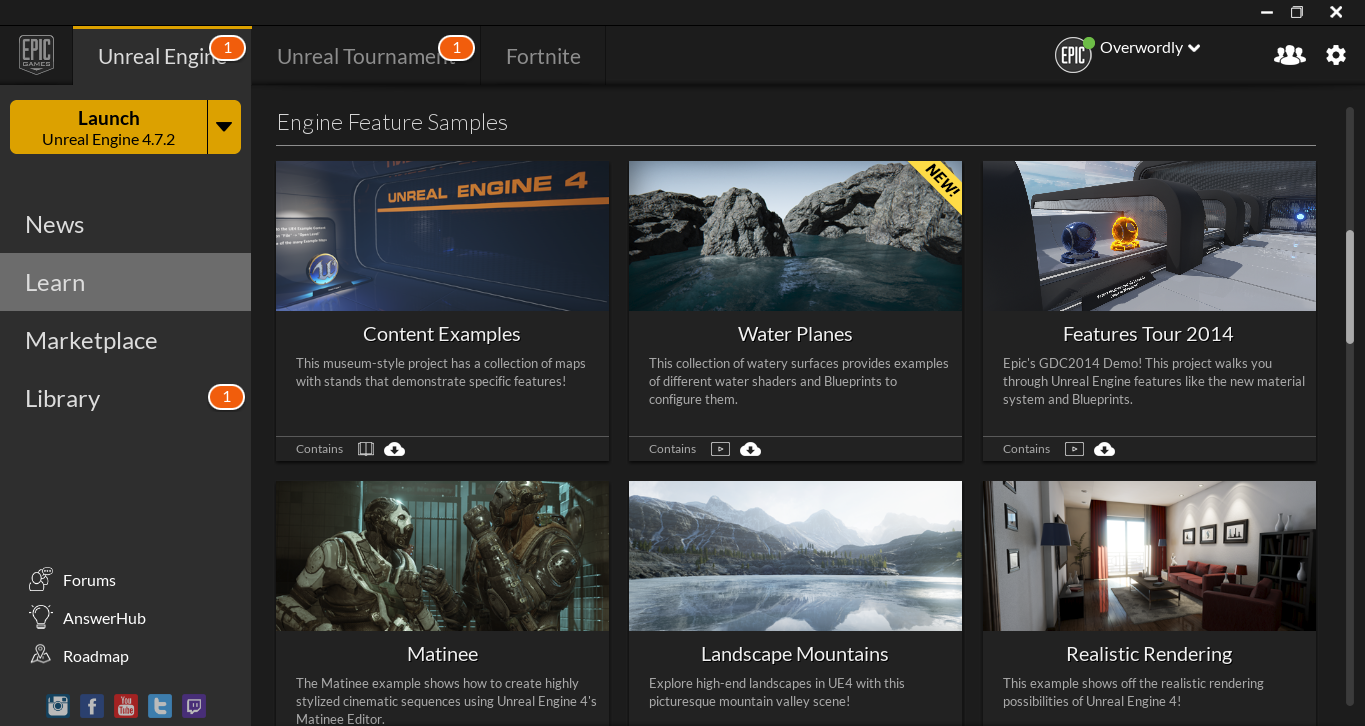The latest GDC brought at least two big surprises for game developers. Firstly, Unreal Engine 4 lost its subscription. Secondly, the monetization of Unity was seriously changed, which minimized the limitations in the free version.

Unreal Tournament 2015
This did not lead to the division of the community into two warring camps of comparable size (Unity is still the most popular tool among independent teams), but the appearance of a choice between two free advanced tools led to a ferment in the minds.
Choosing between the free Unreal Engine and the free Unity Engine is not the easiest task.
To figure out whether it’s worth taking up development on Unreal Engine 4 today, we decided to take a closer look at the Epic Games engine.
Why there are no games
The engines of the series have always sold the titles released on it by Epic itself.
Unreal and Unreal Tournament contributed to the fact that Deus Ex and Rune were created using Epic technology.
The appearance of Unreal Tournament 2003 largely promoted the second generation, which released a huge number of games, including such major titles as Lineage 2 and Bioshock.
Gears of Wars sold Unreal Engine 3 perfectly.
In this regard, the situation with the four is fundamentally different. Epic Games itself has not yet released its game on the engine. Cartoon cooperative action Fortnite is currently in development. Project Bluestreak, a new game by Cliff Blesinski, one of the key authors of the Unreal and Gears of War lines, has just been announced. Unreal Tournament 2015, created in a unique way – by a community of players and developers, is also far from over, although everyone can already play it.
Project Bluestreak
In general, there have been no hit projects on it yet.
This is not a sign of its poor quality.
It’s just necessary to remember here: the technology was officially launched a year ago. Gaming blockbusters for PC and consoles have been developed by large companies for two or three years today.
Of course, you can object: mobile games are made much faster.
That’s right, but it’s important to take into account another factor. The very popularization of fundamentally new tools in the presence of competitors and in the process of switching to a new monetization system is a long, complex process.
It is impossible to take and do everything in one moment, all small teams began to create their games on Unreal 4. Unity took about five years to “promote”.
The market demands change
For about 12-13 years, Epic had the entire market of third-party solutions. If large companies did something based on third-party solutions, then they did it on Unreal.
In such conditions, Epic quite naturally raised the price tag to the maximum. At a certain stage, which began just when switching to the current generation consoles, it became more convenient or profitable for market leaders to use their own solutions.
Fortnite
This forced Epic to pay close attention to independent developers and mobile devices, sites where by this time the Unity engine was already dominating, which today is a full-cycle factory with its own analytics, advertising grid and even a publishing division.
In order to regain its former leadership, it was decided to change priorities, completely change its policy towards the developer community.
New priorities
Mobile
The developers of the engine claim that their package was created, among other things, for the development of mobile games. And two-dimensional ones too.
Blueprints
A programming tool using flowcharts.
It is implied that with its help you can create a ready-made game without knowing programming languages. According to our friends with http://unreal-engine4.ru /, it really is.
But, it seems to me, it will be more convenient to use it not as a replacement for lines of code, but as a rapid prototyping tool and an opportunity for non-technical specialists to quickly solve minor problems without contacting the technical team.
Why do I reduce Blueprints to this?
There are two reasons. The first is that the creation of a large complex project in the format of a flowchart that takes into account all the game elements gives rise to a giant structure that is not lifting for revision.
It’s great when you can even write a water shader with Blueprints, but you have to understand that it alone in the schema format is a huge table.
The second reason: there is a fear that translating from prints to code will be a more resource-intensive task than from code directly.
Open source
With the fourth pillar, everything is quite simple. Those who develop on the engine have access to the source code of the engine, which is built in C++. Is there something you don’t like, not fully optimized? In theory, if you can figure it out, you can change it, finish it for yourself and your project.
Marketplace
While it is premature to call the content store a competitive advantage of Unreal Engine, since Unity still has incomparably more choice on the Asset Store.
Another thing is that, most likely, we will soon face a situation where game content producers will offer their services in both stores, which will eventually lead to approximately the same content of both.
0 – new price
Another new priority of Epic was the need to form the widest possible user base of the engine. To do this, the price of the engine was first reduced to $ 19, and now to zero.
This could be a turning point in the development of the engine. The tool that many people used to have questions about has become free. Even $19 could be regretted, given:
- lack of a large portfolio for a specific version of the engine;
- completely new toolkit (those who have worked in Unreal Engine 3 need to work in the new
- versions to relearn);
- the absence (temporary) of a large community.
In other words, it was about acquiring a pig in a poke.
Now access to it is open. There are no obstacles. You can check for free which cat is in the bag.
This is how I have a “wrapper” for the engine and two Epic Games
Plus, we all know that the difference between “costs a little” and “free” is gigantic, which, by the way, is demonstrated by the history of the mobile application market, where content that allows you to download for free, in terms of downloads and revenue, has almost completely replaced paid programs.
Reaction
Therefore, it is not surprising that the initiative was received favorably.
Pavel Ryakkonen, Executive Director of Nevosoft, considers it a beautiful move and a solid plus to the image of Epic Games.
“This is a great gift for those who don’t like code, but want to develop. And from this point of view, together with the built-in level editor, Unreal looks very attractive today (including for indie),” Sergey Korolev, CEO of Magisterion, said in an interview with us.
But will they now switch to Unreal massively from Unity, which is currently at the peak of popularity? As mentioned earlier, this requires at least a few hits, if I may, real cases.
Ilya Eremeev, Creative Director of A-Steroids, agrees with this position. When we asked if his studio would be ready to switch to a novelty, he said that such an opportunity is not being considered yet: “We need more successful mobile projects on UE to begin with, as well as more educational activities, since everyone has heard about Unity, and UE is perceived as something cumbersome for large heavy three-dimensional games”.
There are other problems that can scare away developers.
“The choice [between engines] is not uncommon to start with a choice: pay now (for Unity Pro licenses) or later (5% UE4 royalties, after $3k). But in the basic version, Unity 5 is also free, and now the functional limitations are minimal. So in indie projects, you can do without Pro licenses at all (up to a profit of $ 100k),” Sergey Korolev notes.
Igor Klyukin, a leading analyst at Pixonic, agrees with him: “after all, 5% of revenue (not even profit) is a very significant factor. With a turnover of $1 million, while marketing costs may amount to $600-700 thousand, and Epic will still claim $50,000.”
But here it is important to understand that in the case of Unity, if a developer earned (in any way, including investments) more than $100 thousand last year, then he will have to buy licenses for the entire team of a specific product. Simultaneous use of the paid and free versions is not allowed. If the team is large and it makes a mobile game, then the price at this stage can easily overcome the mentioned mark of $ 50 thousand.
Problem solving
The problems associated with low popularity and a small number of projects in Epic Games are most likely perfectly understood.
Today, the company is very actively trying to establish communication with the developer community, regularly performs PR videos, conducts Twitch meetings, regularly posts training videos with both basic engine lessons and real examples of how to create a runner, turn-based tactics, a racing game, and so on.
In addition, Epic Games has recently created an investment fund of $ 5 million. The company announces almost weekly about those teams that receive grants from it. For example, just below the video of Planet Alpha 31, one of the winners:
It is clear that in a number of initiatives Epic Games are learning from Unity, but by the way they do it, it seems that they are looking back at their Scandinavian colleagues in order to “catch up and overtake”.
Will it work? Time will tell.
But should I take up the creation of a game on a new engine? It’s not that simple here.
If we are talking about a young team ready to learn new tools on the go, then, rather, yes. Epic is now very attentive to any projects. For this reason, it seems to me that a good product has the opportunity to receive both marketing push and monetary support.
From a business point of view, everything is more complicated: there are no relevant engine specialists on the market yet, in general, due to the youth of the engine (as already mentioned, version 4 has little in common with 3), there are more risks than when working with Unity or your own already developed solution.
Anyway, in any case, it is important to understand that, first of all, it is necessary to start from the specific tasks that the project faces.
The game should determine the choice of tools, and not vice versa.






